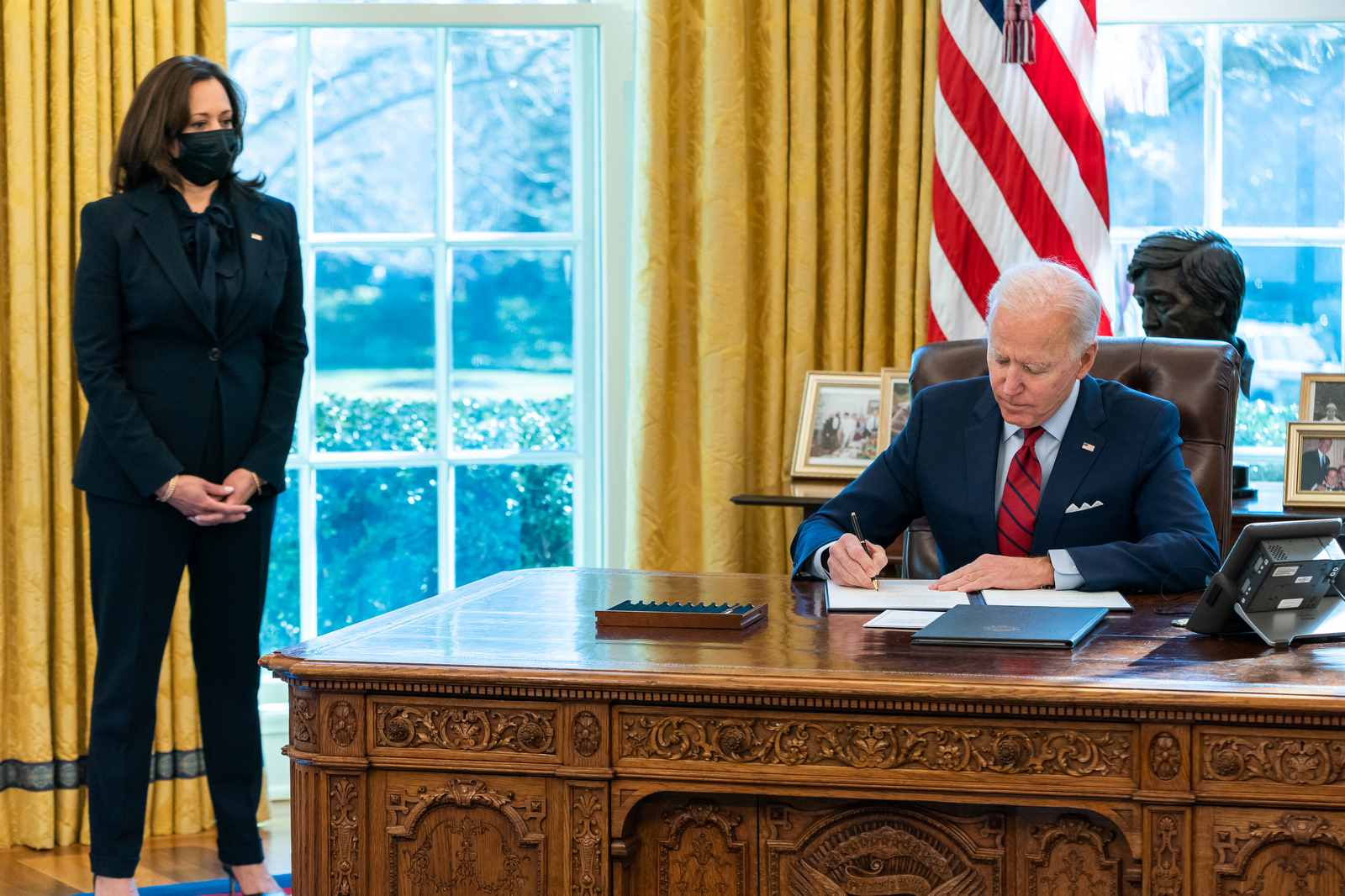Broadband Missing from Biden-Harris Equity Fact Sheet
Makes no mention of high-speed internet access as factor in advancing economic, educational opportunities

The Biden White House has released a fact sheet on its efforts to advance equity and opportunity, including educational opportunities for Black people. But neither in that pages-long email to reporters nor in a new executive order from the president on further advancing equity (the White House Initiative on Advancing Educational Equity, Excellence, and Economic Opportunity for Black Americans) is broadband even mentioned in the equity equation.
The term does not even appear in either the fact sheet or executive order, though the order is about advancing educational and economic opportunity for Black Americans. Both goals clearly implicate broadband access, whether it‘s used to start online businesses or to do homework at home rather than in the McDonald‘s parking lot.
Also Read: Treasury Sets Table Stakes for Broadband Bucks
The administration has succeeded in getting billions of dollars in subsidies for broadband and is trying to get tens of billions more, making a point of how important it is to close the digital diversity divide in part by making broadband more affordable.
In addition to a multibillion-dollar subsidy in the American Rescue Plan to make sure there is equitable access to broadband at schools and libraries (e-rate funding), the bill also includes a Treasury Department-administered homeowners assistance fund. That fund contains $9,961,000,000 that states can tap (until 2025) for payment assistance for the “qualified expenses” of individuals, primarily in low-income households, who need help due to the pandemic. While the fund can be used for everything from mortgage relief to flood insurance, it can also be used for “internet service, including broadband internet access service.“
Federal Communications Commission chair Jessica Rosenworcel has long argued that broadband access is an equity issue, particularly access for homework, a gap she noted before it became a pandemic issue.
She has promoted auctioning spectrum for WiFi, which the FCC is currently doing with the 3.45-GHz band, saying that the technology “democratizes internet access.” And in a video intro for Digital Inclusion Week last month, Rosenworcel said that millions still find themselves on the wrong side of the digital divide, but pointed out that the Biden administration had made historic investments to close that gap.
The smarter way to stay on top of the multichannel video marketplace. Sign up below.
But there was no mention of broadband or the internet in the fact sheet on administration equity efforts, even though it was billed as coming from the “Biden-Harris administration” and Harris, who is Black, has been been charged by the president with shepherding his universal broadband initiative.
In the section on “Ensuring Equitable Educational Opportunity in K-12 Schools and Higher Education,“ the fact sheet cites investment in reopening schools for in person instruction. It makes no mention, though, of the billions in emergency aid the administration is spending and the FCC is administering that could help close the homework gap that over-indexes for low-income rural and urban areas.
Under improving health outcomes for Black communities, the administration makes no mention of the millions of dollars the FCC had to stand up quickly to help subsidize remote healthcare.
Contributing editor John Eggerton has been an editor and/or writer on media regulation, legislation and policy for over four decades, including covering the FCC, FTC, Congress, the major media trade associations, and the federal courts. In addition to Multichannel News and Broadcasting + Cable, his work has appeared in Radio World, TV Technology, TV Fax, This Week in Consumer Electronics, Variety and the Encyclopedia Britannica.

